Review by Pete Vack
Shelby Cobras: CSX 2001 – CSX 2125
The Definitive Chassis-by-Chassis History of the Mark I Production Cars
by Robert D. Walker
In 1963, 23-year-old jazz musician Herbie Hancock, flushed with money from his hit, “Watermelon Man” walked into Kriesler’s auto showroom in Manhattan, eyed the white and red sports car on the floor, and said, “I’d like to buy the Cobra.” It was Hancock’s first car. “I had only driven an old Dodge my father had bought me for college.” The price was $5,825 plus taxes and license.
Celebrities making such purchases was nothing new, even for an African American in the sixties. But Herbie Hancock still owns Cobra CSX 2006, in original condition, and has the record for owning a Cobra longer than anyone else. Being it represented the first ‘real’ money earned in his illustrious music career, he said “It (CSX 2006) will never mean as much to anyone else who owns it as it does to me.”
If only all Cobras had that kind of simple, continuous, unadulterated history. Unfortunately that is far from the case, requiring the talents and tenacity of guys like Rob Stainer, the Cobra Registrar of the AC Owner’s Club UK, restorer and research expert Florian Seidl in Germany, and author Robert D. Walker, who put this all together to create a two-volume set with 1060 pages and 1561 photos documenting the history of each of the 125 Mark I Cobras.
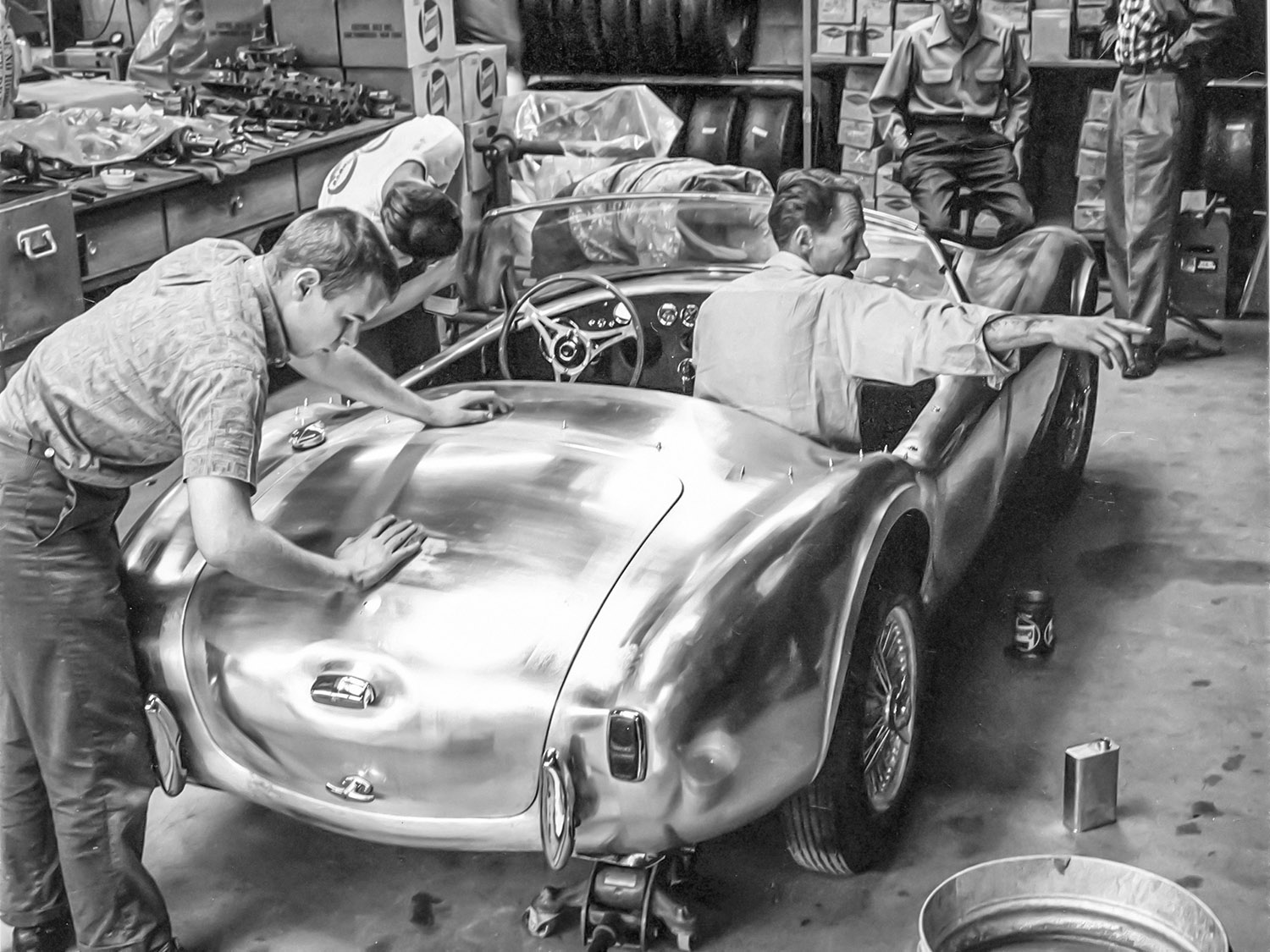
Pure Cobra, pure hot rod. Not pure American but so iconically American it is still easy to forget the role played by AC cars in the venture, which given the fact that they constructed the body and chassis is not inconsiderable. It was left to Ed Hugus and Shelby to ‘complete’ the car by dropping in the Ford V8 and getting it road ready.
So what is a Mk I Cobra? The very first, the original, Shelby’s baby, not the fastest but perhaps the most well-balanced with the small block Ford engine, lightweight due to thinwall casting technology, enough power to eat Vettes but not enough to twist the frame. The Mk Is are readily identified by the use of a worm and sector steering box and transverse front springs as at their birth these Cobras came with these somewhat anachronistic fittings, though god knows how many remain that way. I should imagine that author Walker does and has listed it somewhere.
Walker has used a number of existing resources as well as his own research to find the truth about every chassis. Four main sources were used, AC Cars’ Ledger, original Shelby documents, all Shelby American Automobile Club (SAAC) registries, and the “Seidl Cobra File.”
So here we have two volumes fixated on those early Cobras. First, is it a registry, or a history, or both? And for practical purposes, is there a difference? If in print form, both are out of date as soon as they come off the press. The American Bugatti Register is updated every 15 years, and others are one time efforts. Both try to include all known chassis numbers and all of what is known about each. In the case of Walker’s Shelby Cobra, The Definitive Chassis by Chassis History of the Mark I Production Cars, the title implies that it is a one time effort.
But oh what an effort. Now, let’s be clear; we have little knowledge of similar books outside of our Italian/French car focus. Nevertheless, we can’t think of a more exhausting, detailed, and comprehensive chassis history book. Simon Moore’s the Legendary 2.3 Alfa Romeo is similar in scope, a history, not a register, (and is currently being updated, so we understand) but the Cobra book offers up more documentation in terms of invoices, bills of sale, option lists, dealer’s stickers, repair bills, and every other kind of paper document that one might think of. This in addition to historical photos and a very dense text create a necessarily busy layout as opposed to the lower density of Moore’s books. And speaking of layout, Dalton Watson’s Jodi Ellis had the task of putting this all together. She too, found the Cobra volumes to be one of the most comprehensive books she has read. “Walter Bäumer’s Maserati books are chassis by chassis, as are Martin Bennett’s RR Silver Wraith and Phantom books and André Blaize’s Phantom II Continental books too, but none are as detailed as this,” she wrote. Walker surely must be congratulated on his persistence, acumen, patience and incredible detail. We need not say that this is a must have for Cobra nutters, who are, according to Ellis, “…are a neat group — this was a really cool book to work on. I love that the cars were (and still are) owned by true fans of the marque.”
Chassis By the Boatload
Walker decided to list the chassis numbers by chapter and not by chassis number, exactly. After a good bit of thought, Walker determined that the best way to present the chronology was by boat. Almost all of the first Cobras were shipped from AC cars by boat, in batches of 2-6 cars. These cars were close in chassis number but not always consecutive. Some were delivered to Ed Hugus’s shop in Pennsylvania, and others to Shelby’s operations in California. Hence, each chapter consists of chassis by boatload. Interesting, no? Walker also tells us what boat carried the precious load, when it arrived and in many cases, provides a photo of the appropriate ship.
Many of the first Cobras were actually completed by race driver and dealer Ed Hugus, who was a neighborhood friend of Walker’s. That relationship resulted in Walker’s first book for Dalton Watson, Cobra Pilote, The Ed Hugus Story, which we reviewed earlier.
With all that in mind, let’s take a quick trip through the pages of Volume 1. We looked for Cobras somewhat out of the ordinary that caught our eye. We’ll do Volume 2 next week.

Caption from the book: Under Jean-Marie Vincent’s direction, CSX 2001 was modified with a hardtop…For many years that unusual hardtop was attached to CSX2001 when it participated in numerous European events.
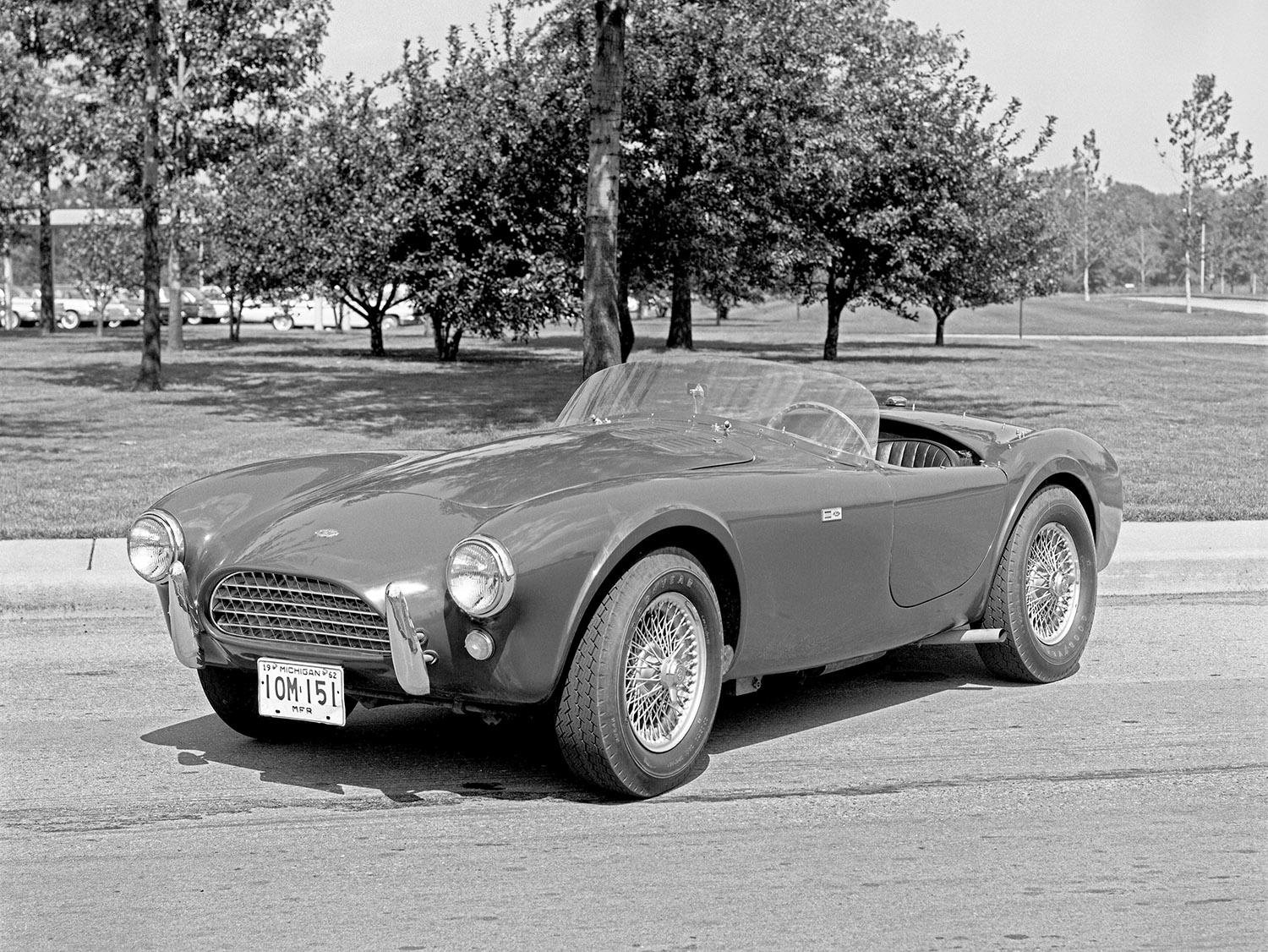
From the book: This is the only known image of CSX 2004 before it was substantially modified a Ford in mid-1962 for an engineering study. It is likely that Carroll Shelby furnished the hood and the windscreen used on 2004.
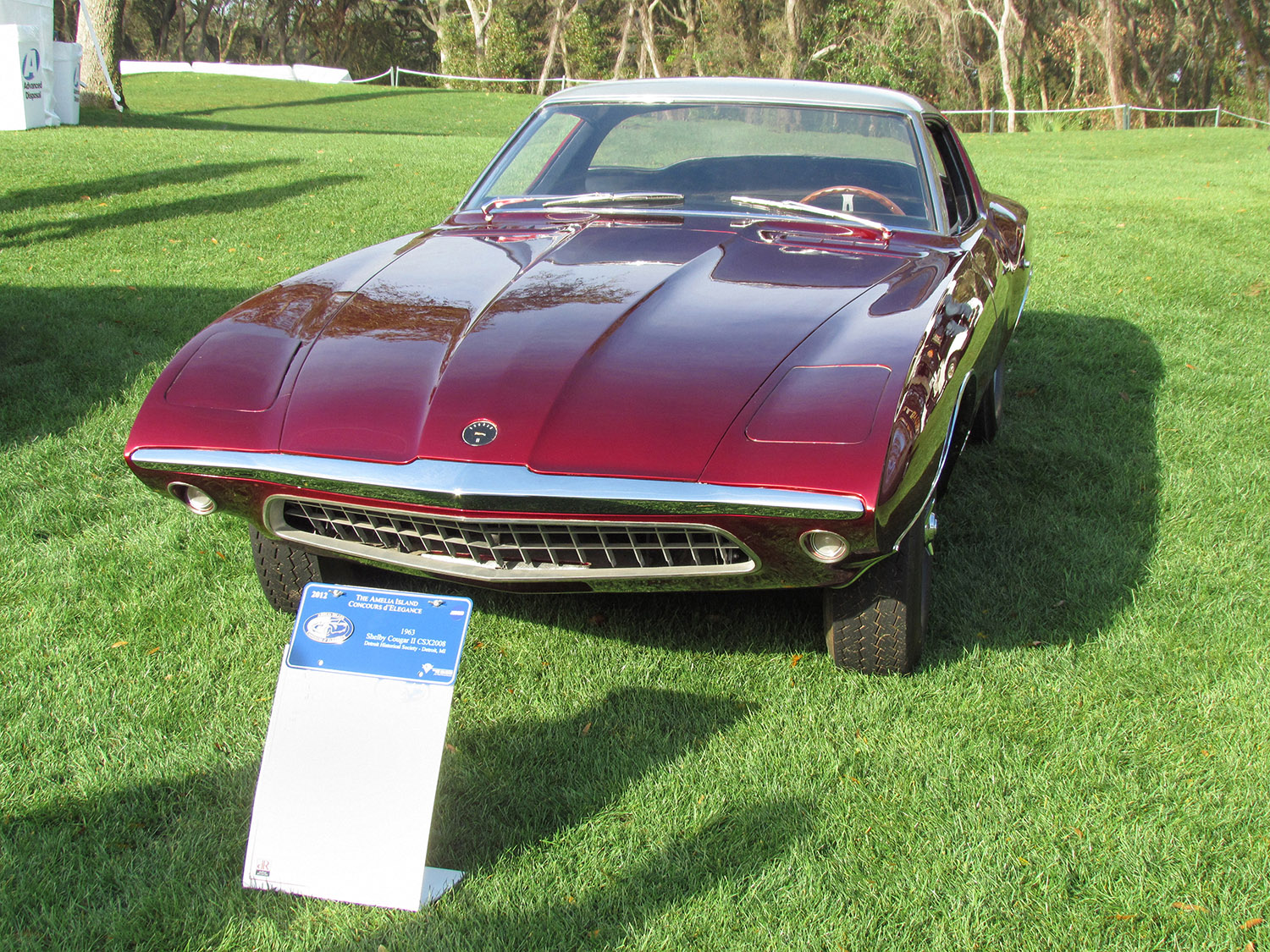
From the book: Cobra CSX 2008 is underneath this Eugene Bordinat-designed “Cougar II” Ford concept car displayed at the 1964 World’s Fair in New York, shown here at Amelia in 2012.

CSX 2023 was last restored in this configuration, changing the original color from white to silver, with full chrome wire wheels and white sidewalls.

CSX 2026 has a more masculine restoration, originally raced by Dave McDonald and Fireball Roberts at Sebring, 1963.
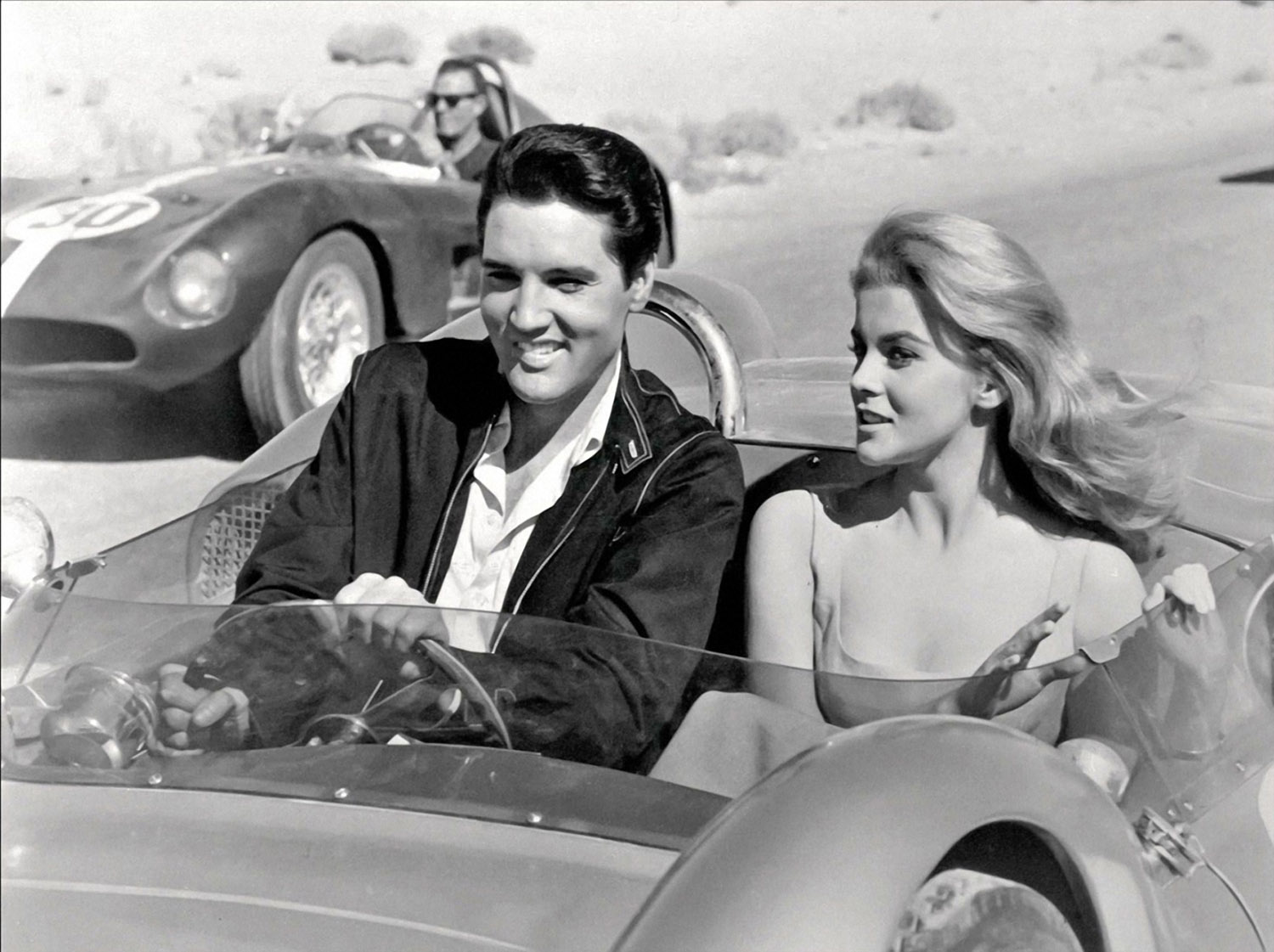
Three Cobras were used in the filming of Elvis Presley’s Viva Las Vegas movie; CSX 2039, 2019, and 2024 “Elvis did virtually all of his race driving scenes while sitting in Dan Blocker’s Elva…” Ann-Margret, on the other hand, was a dedicated Triumph motorcycle rider.
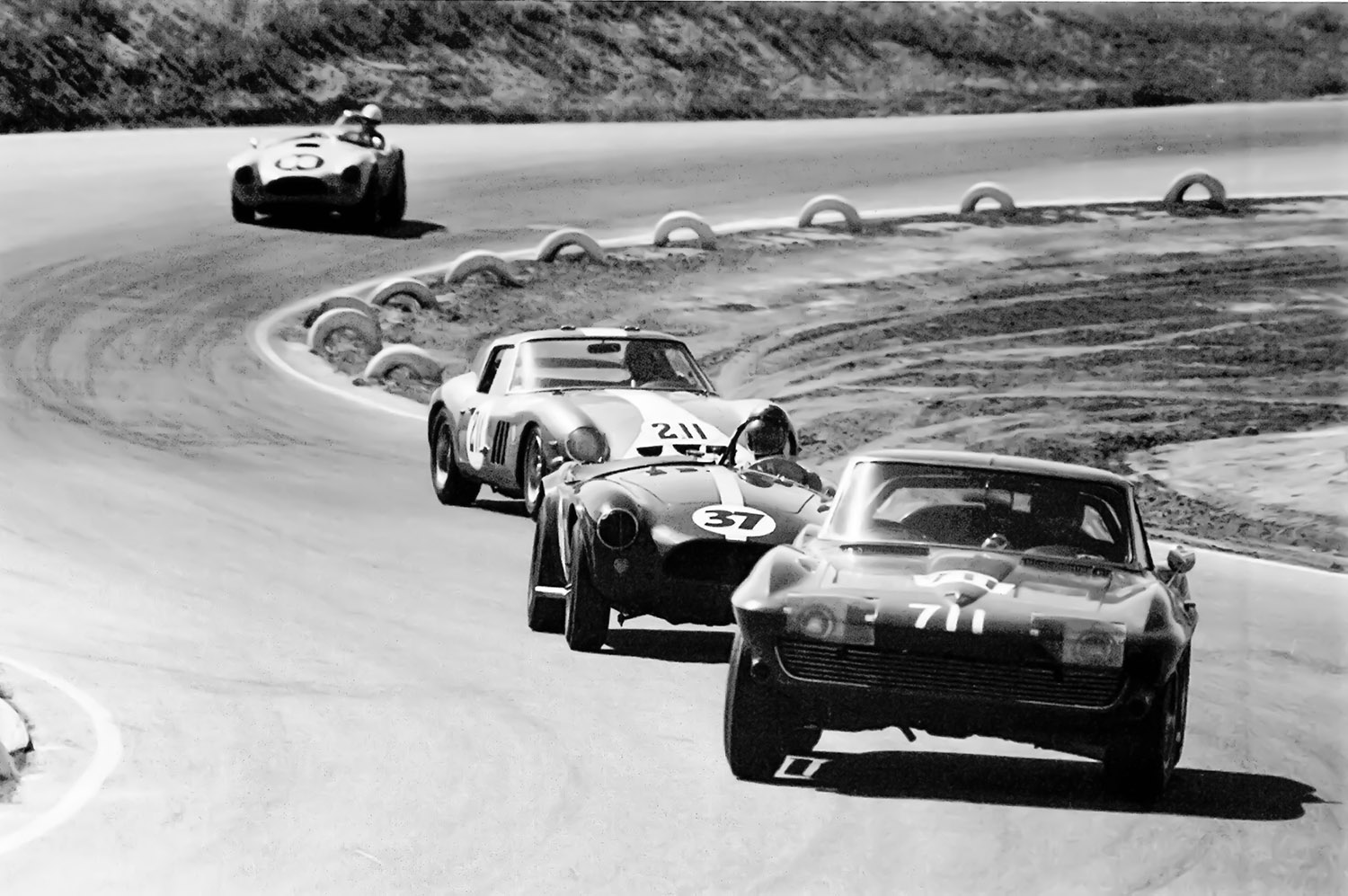
Quintessential Cobra race photo, with a GTO, Cobra CSX 2049 and a Corvette Stingray at Riverside, October 13, 1963. The driver would die one month later after an accident with the car at Willow Springs Raceway.
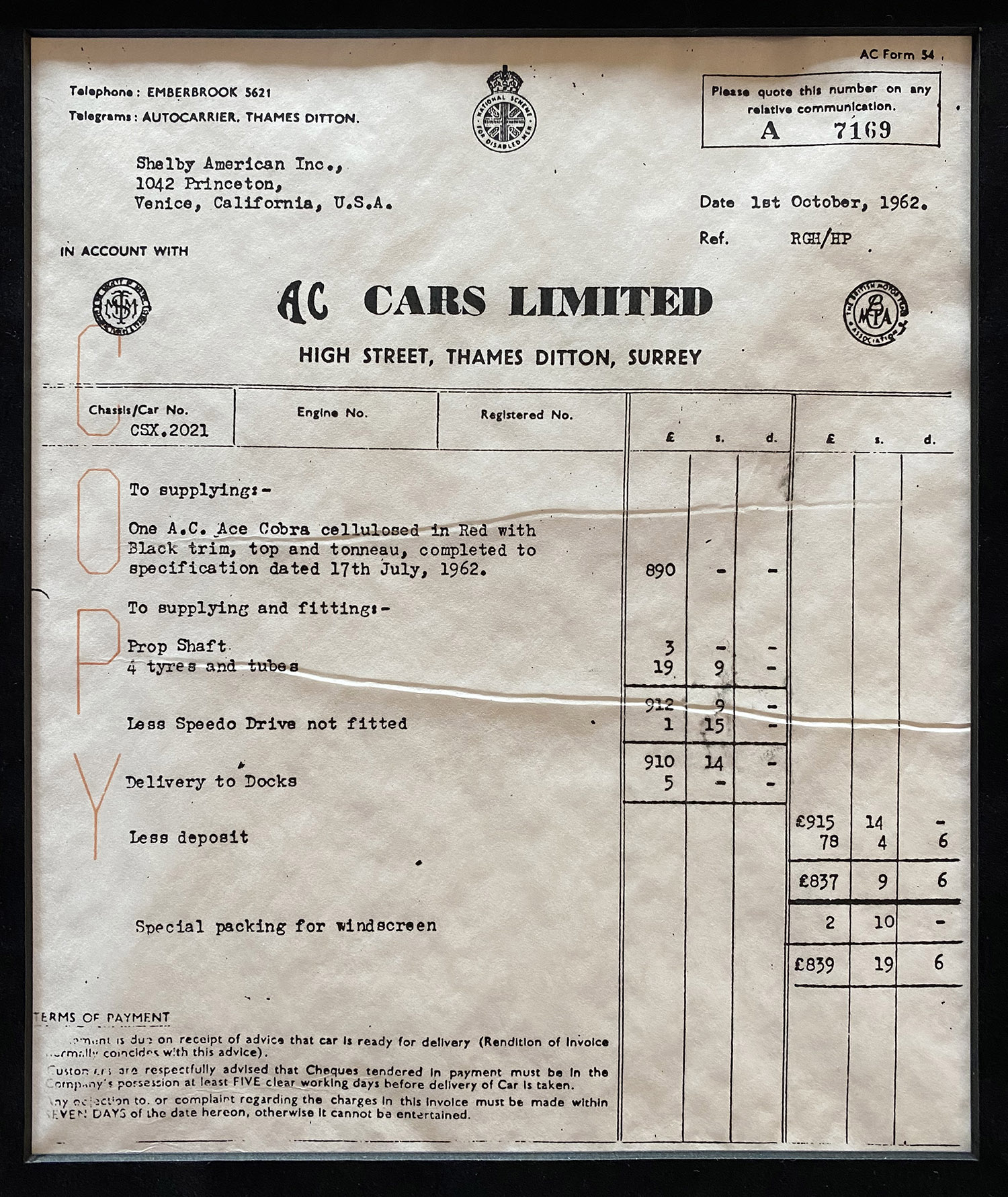
Examples of the types of documentation to be found in the book. Here the AC invoice to Shelby for Cobra CSX 2021.
Next up, we tackle Part 2
Shelby Cobras: CSX 2001 – CSX 2125
The Definitive Chassis-by-Chassis History of the Mark I Production Cars
by Robert D. Walker
230mm x 280mm
2 Volumes
Hard cover with dust jacket in slipcase
1,052 pages
1,569 images
25 MyRewards points with purchase
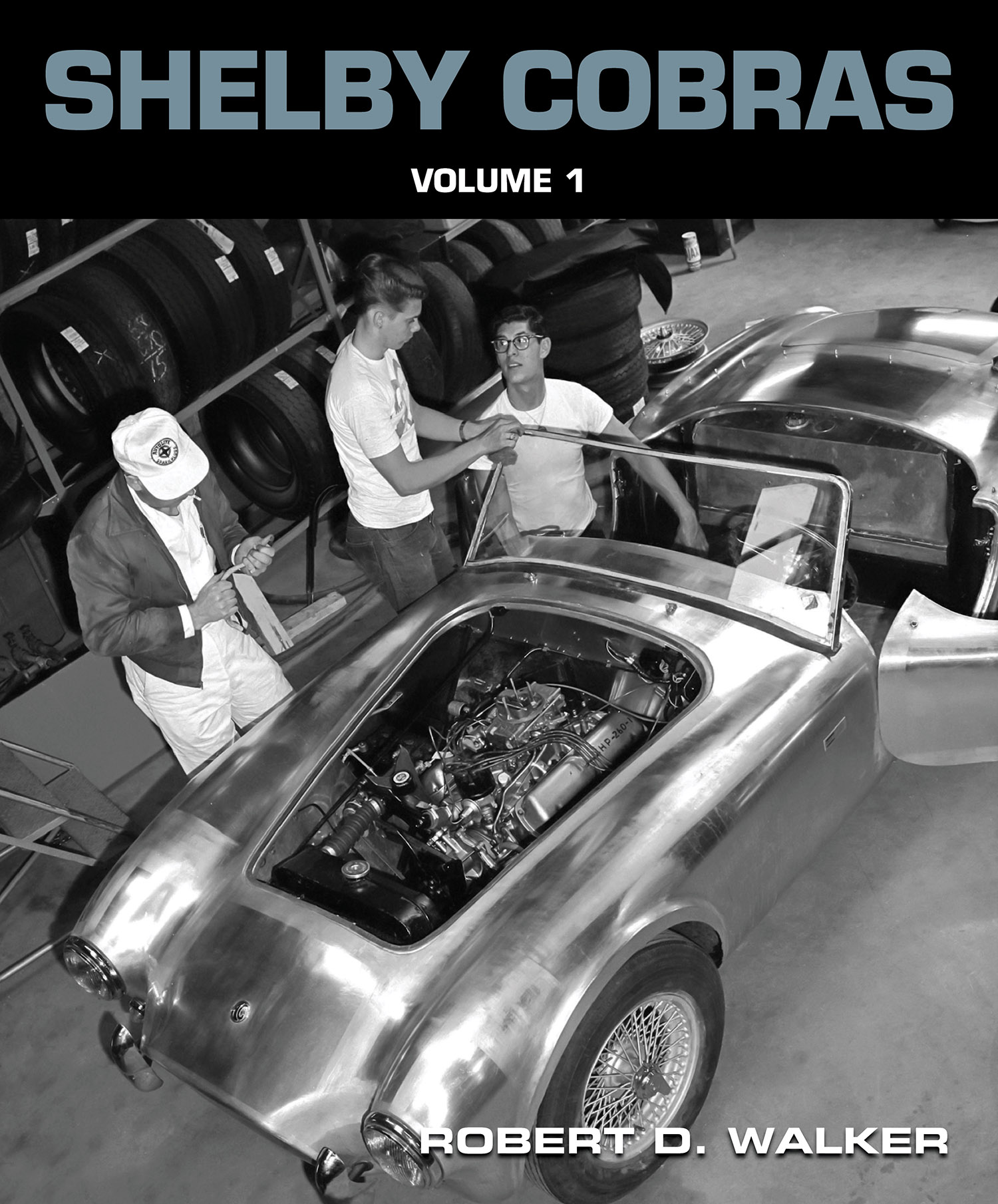
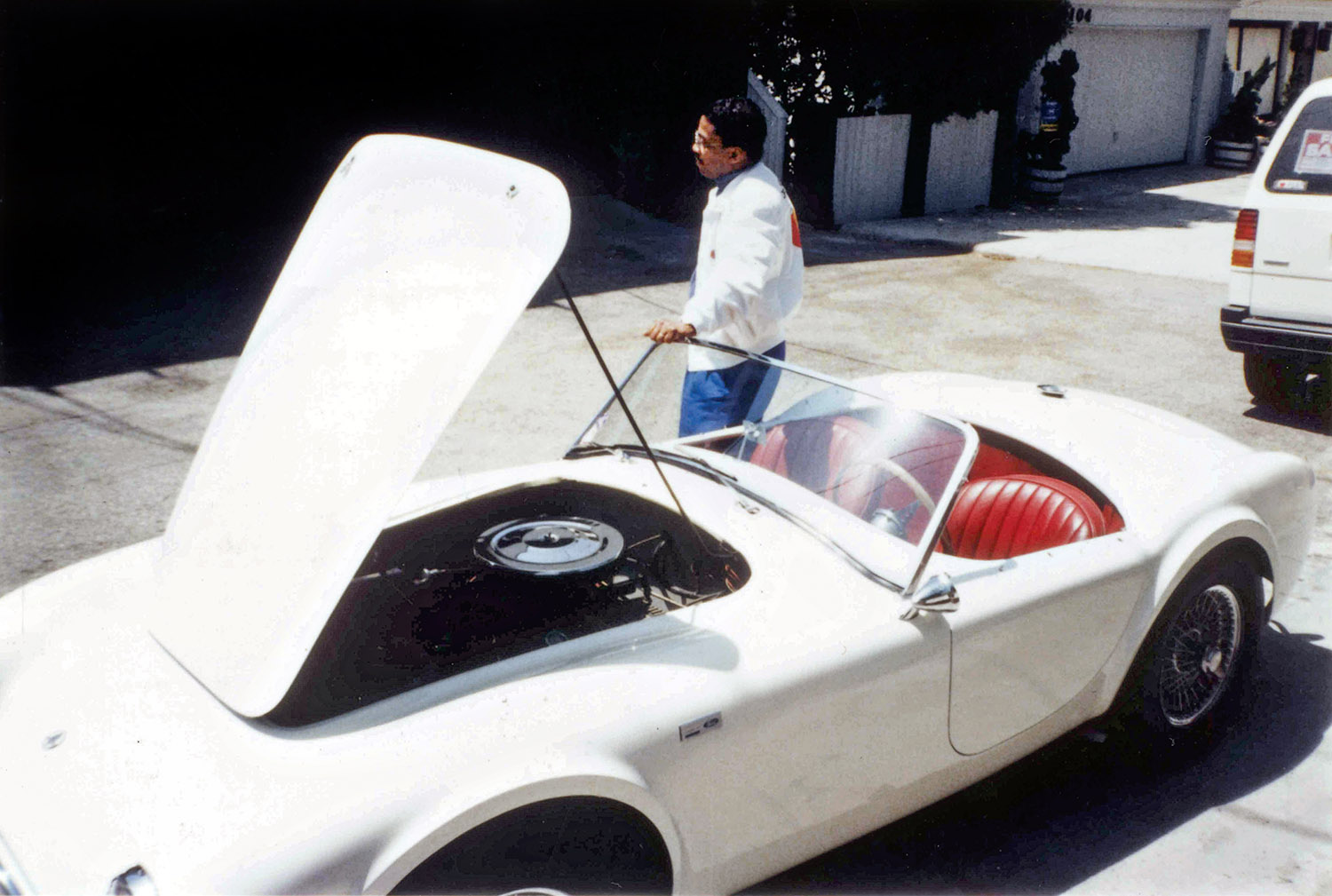
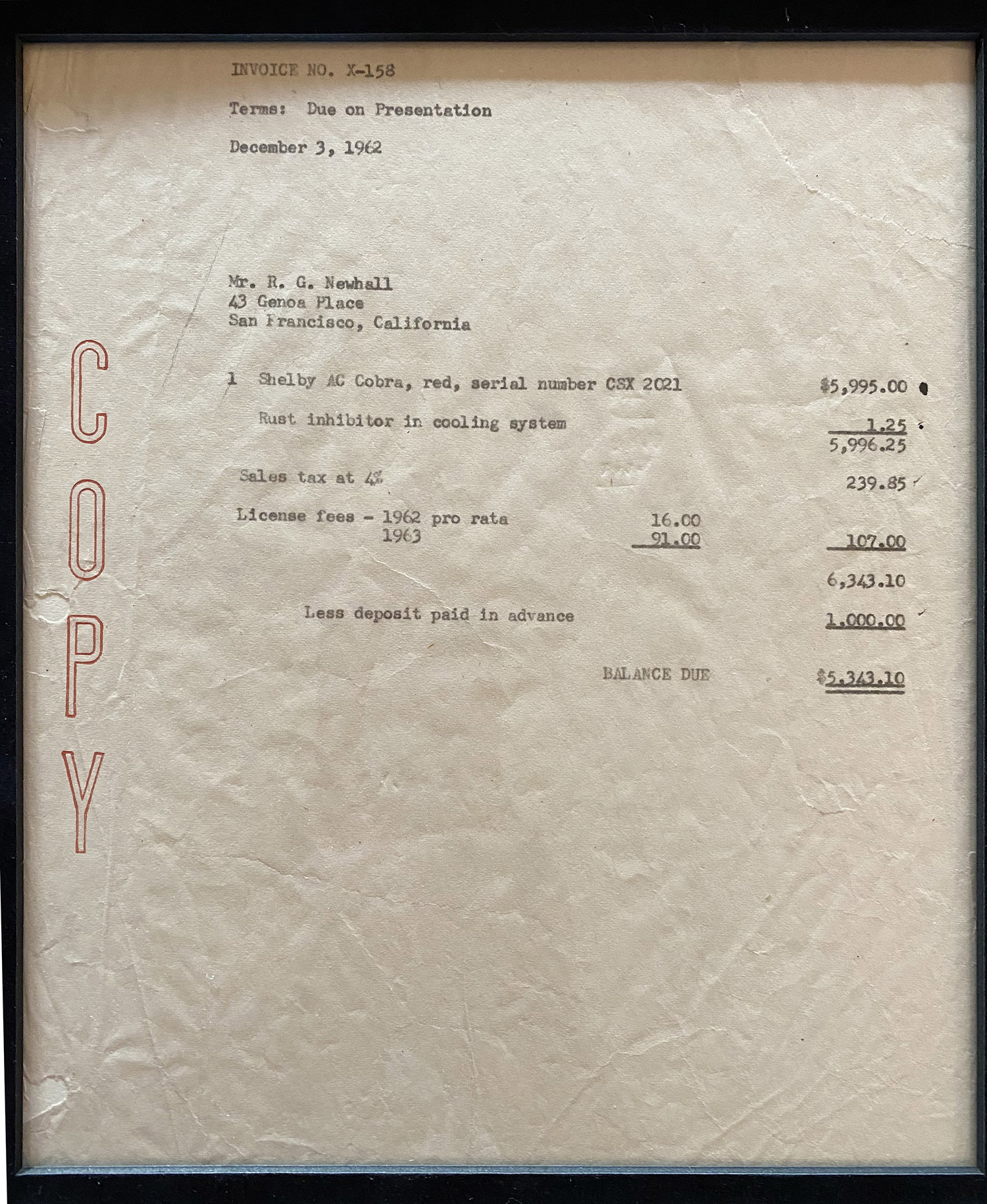
I have the book(s) and they are mind boggling. Detail beyond belief. My compliments to Mr. Walker for the most pain-staking research that this involved. Everything about every owner, color, repair is in here. I am somewhat surprised that it does not list the date and type of oil used for every oil change! It is that complete. Race histories are general and not every race listed, but this was not intended to be a race by race history. Cobra fanatics will go nuts over this two volume set. Warning–when the post man drops this off at your door you will need a fork lift to get it inside. It is heavy!